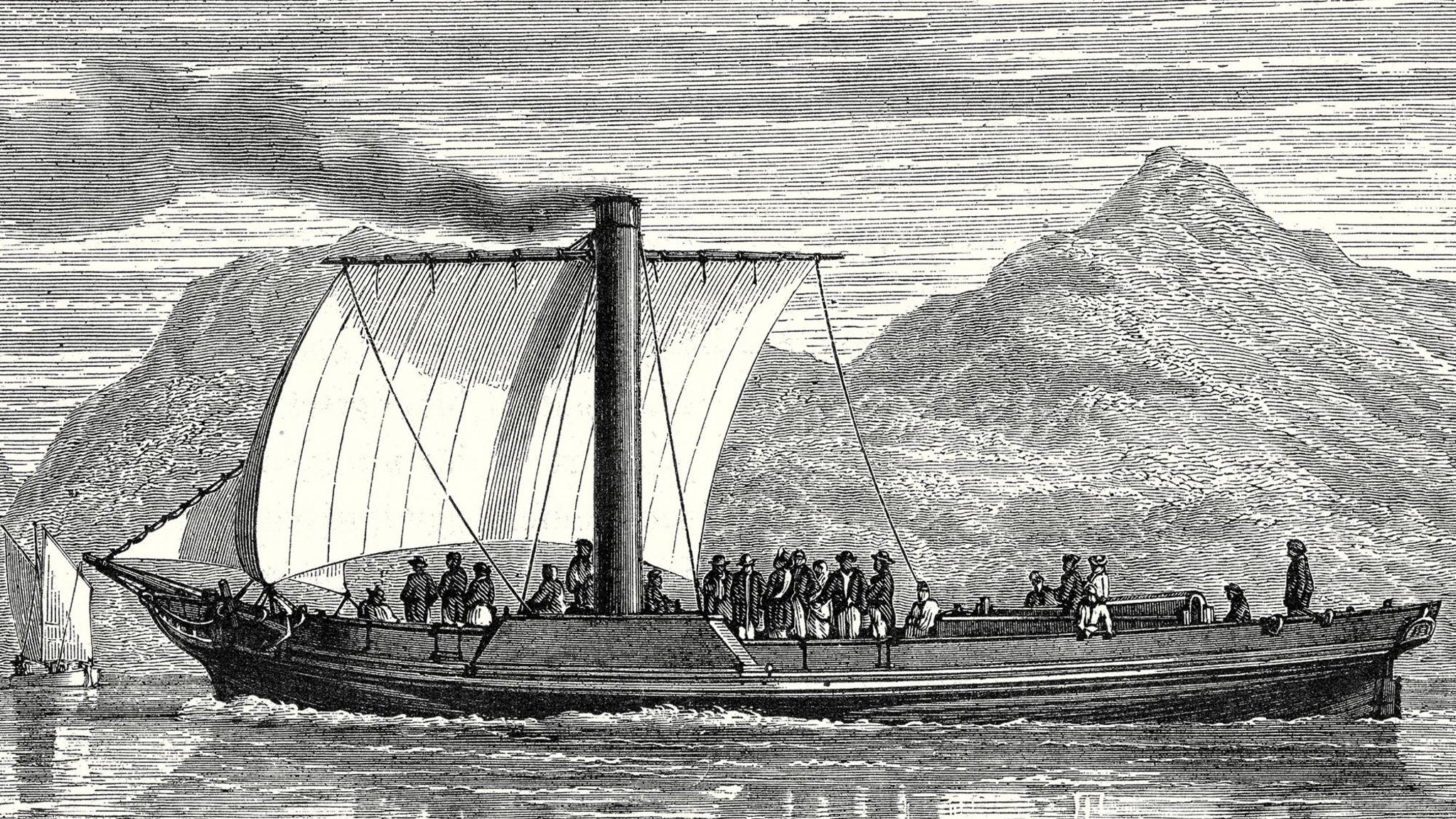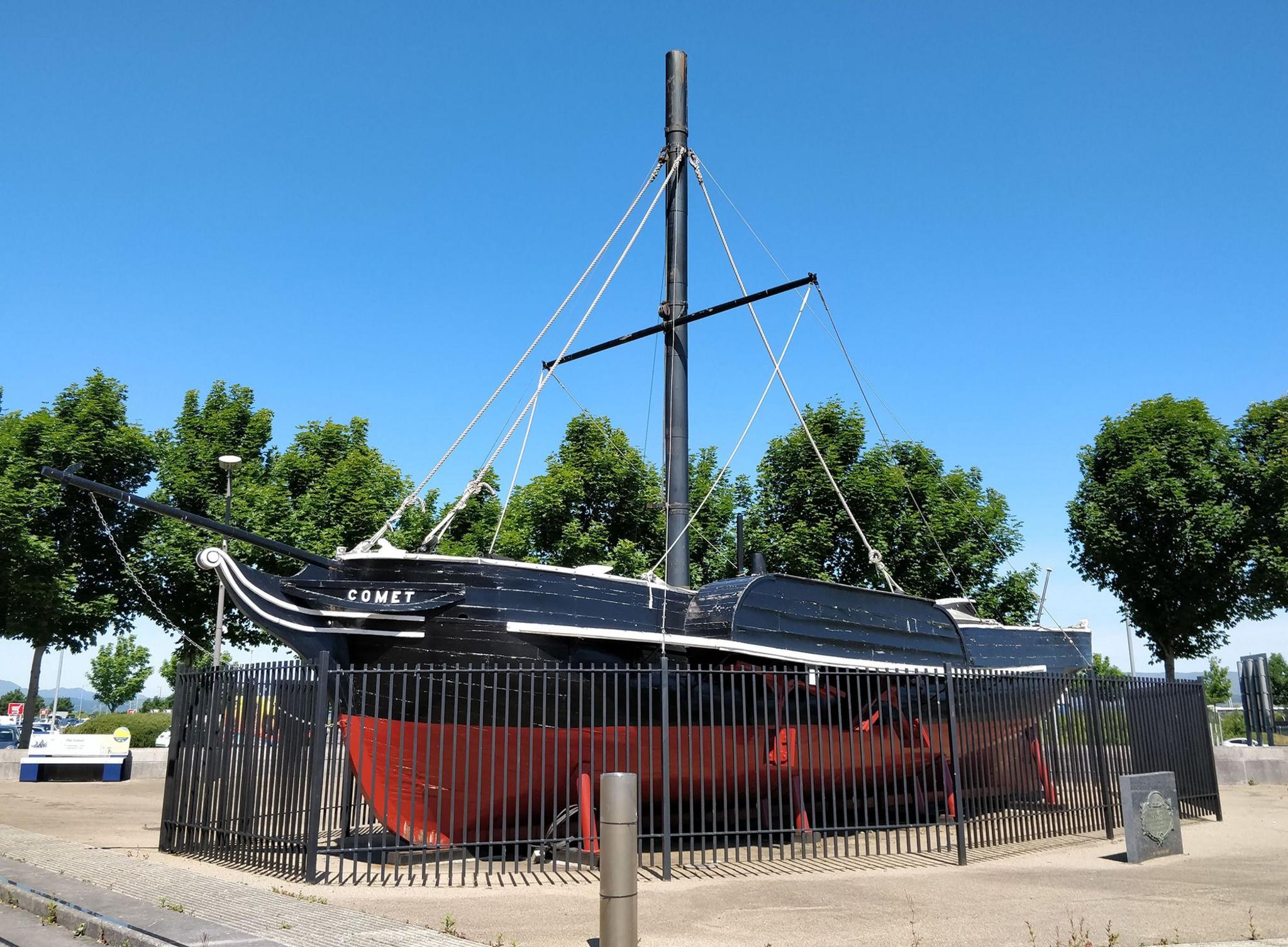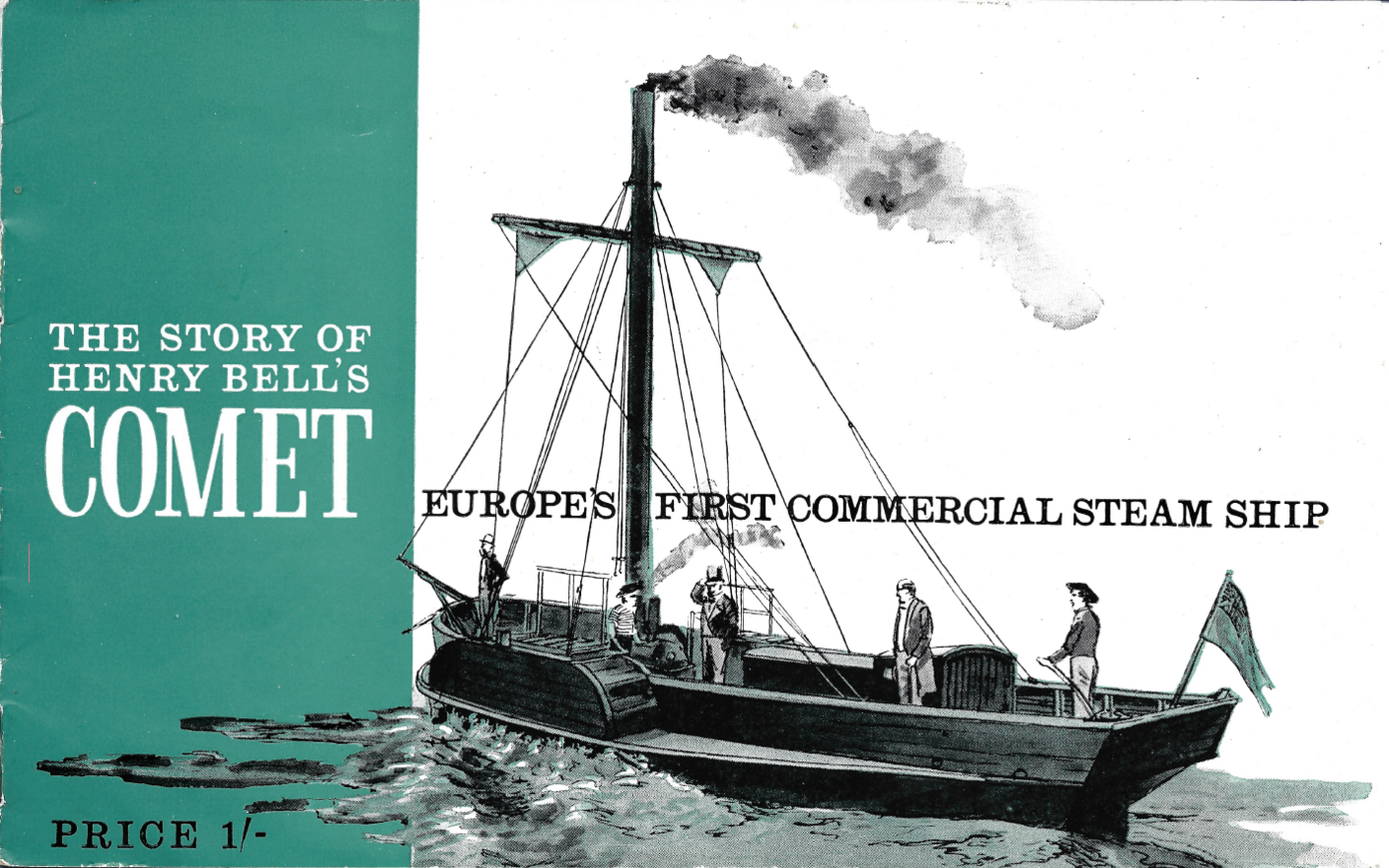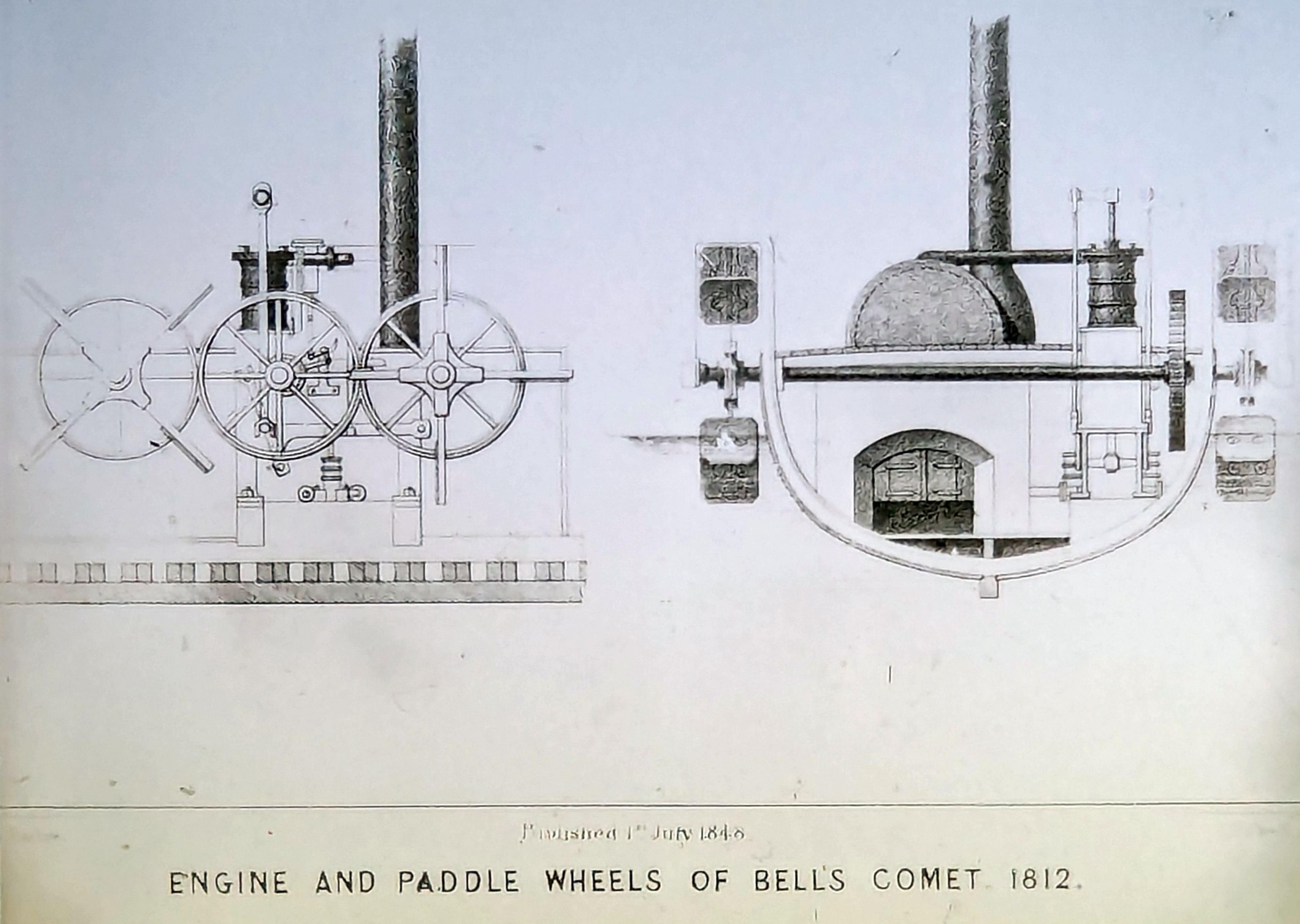Clydebuilt ship that changed the world celebrated with new replica

The Comet was powered by a small steam engine while its funnel doubled as a mast so that a sail could also be hoisted
- Published
A Clydebuilt ship that helped transform world shipbuilding is to be commemorated again in the town where it was launched more than 200 years ago.
Inverclyde Council has awarded a contract to build a new replica of Henry Bell's Comet, Europe's first commercially successful steamship, which first sailed from Port Glasgow in 1812.
The full-sized model will replace a previous replica built for the 150th anniversary in 1962, but which was removed two years ago as its timbers had rotted.
The new replica and signage explaining the ship's historical significance should be ready for next year's Comet festival, held every June in Port Glasgow to celebrate the town's heritage.
Wreckage of rare steamship given protected status
- Published9 August 2023
Local councillor Chris Curley, who chairs the Port Glasgow Town Centre Regeneration Forum which is overseeing the project, said Comet remained a source of pride for the town.
"You can trace everything back to the Comet," he said.
"After the Comet there was an explosion of steamship design on the Clyde and throughout the UK."

A full-sized replica of the Comet, built in 1962, was removed two years ago after 60 years of wind and rain had taken their toll on the structure
At the start of the 19th Century James Watt's improved steam engine was transforming manufacturing and powering the industrial revolution, but applying the new technology to ships was lagging behind.
Another Scottish engineer William Symington had a breakthrough with the steamboat Charlotte Dundas in 1803 on the Forth and Clyde canal but fears that the wake from the paddles would erode the banks meant the project was shelved.
Eight years later Henry Bell, who is said to have studied Symington's boat, asked the John Wood shipyard in Port Glasgow to build him a steamship for the River Clyde.
Named after the Great Comet of 1811 which was visible to the naked eye for 260 days, it took to the water the following year, offering a passenger service between Glasgow, Greenock and Helensburgh.
The service was an instant success, soon emulated by others, kickstarting a century of innovation that saw the Clyde become the powerhouse of world shipbuilding.
"In Port Glasgow, most people know the story of the Comet, but I think we maybe need to get a bit better at telling the story of the Comet," Councillor Curley said.

A pamphlet was produced in 1962 to mark the 150th anniversary of Henry Bell's Comet
The 150th anniversary of the Comet was marked in Port Glasgow by parades, fireworks and a voyage to Helensburgh in the replica vessel by a group of locals dressed in period costumes who laid a wreath at the Henry Bell memorial.
The replica's wooden hull was built by boatbuilders in Buckie, while the engine was made at the Kincaid engine works in Greenock and fitted by apprentices at Lithgow's shipyard.
Unlike its predecessor, the new copy of the Comet is not designed to sail, which means it can be constructed in a way that will give it greater longevity.
"We identified that what we wanted is a ship that looks like the Comet but wasn't to be a performance specification," Councillor Curley said.
"We want something that's long lasting, that looks like the Comet."
The council has now awarded a £340,000 contract to build the ship to Sheffield-based firm Aivaf which specialises in making models for museums and visitor attractions.
"It's quite a specialised activity, building what is in effect an outside sculpture," Councillor Curley said.
The firm will build the new replica using treated wood and stainless steel with a design that allows for ventilation and rainwater to drain away. It will be displayed in the town centre, in the same spot as its predecessor.
The 1962 copy of the ship's engine built at Kincaid's has been kept and could also be exhibited again in the Inverclyde town.

Drawings show the engine and mechanical arrangements for Comet
Residents of Port Glasgow were outraged last week when an architectural magazine named it winner of the Carbuncle Award for being the "most dismal" town in Scotland.
A local businessman refused to accept the "Plook on the Plinth" trophy, saying it was an insult to a community which had a long history of resilience in the face of difficult times and "punching up, not punching down".
Councillor Curley said he hoped the return of a replica Comet would demonstrate that Port Glasgow was proud of its shipbuilding past, but was also looking to the future.
He said: "It shouldn't just be about heritage. We are remembering our heritage but also saying what is the future of Port Glasgow?
"Part of that is keeping a shipyard in Inverclyde, keeping that maritime engineering going and looking for opportunities to bring new industries into the town."
Henry Bell's original Comet was wrecked in treacherous currents near Oban in 1820.
Its engine, designed by engineer John Robertson, was salvaged and initially put to use in a brewery in Greenock but it now has a permanent home in London's Science Museum.
Two years ago the remains of the wooden ship's hull were rediscovered in 12m (39ft) of water off Craignish Point.
The wreck has since been given protected status.